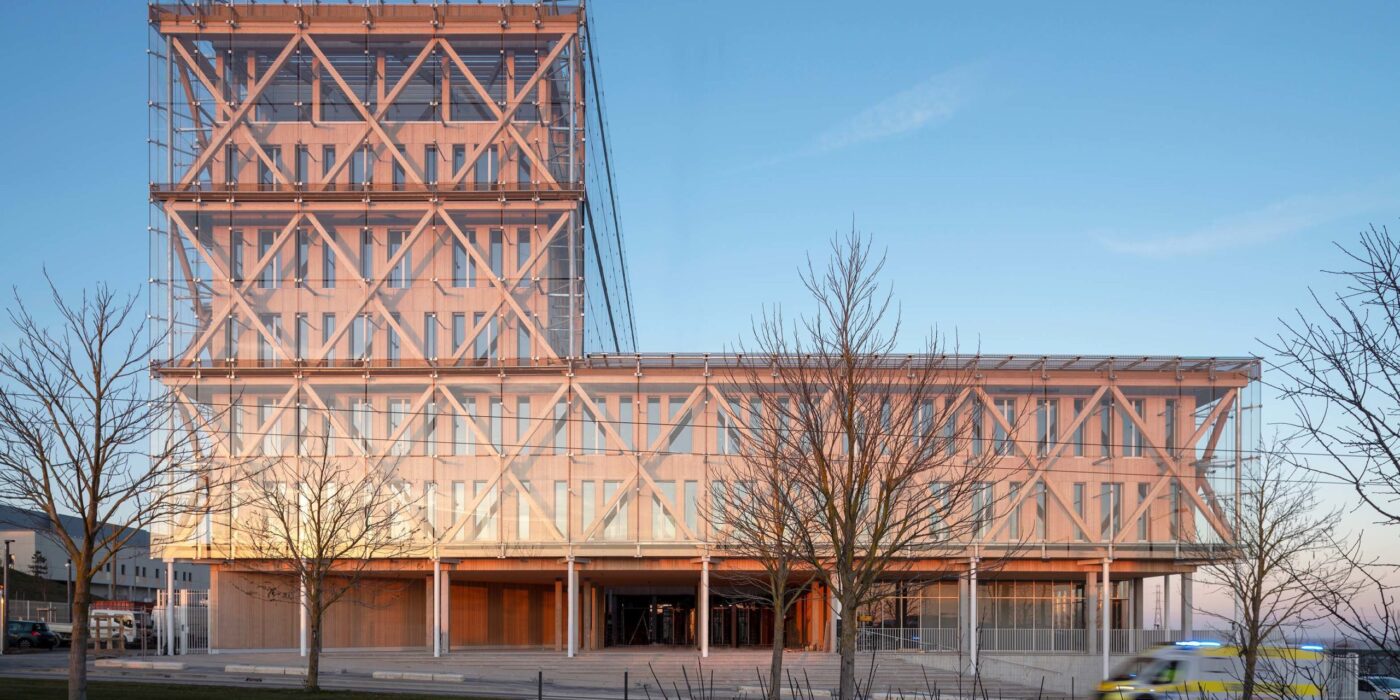Architizer is thrilled to announce that the 11th Annual A+Awards is open for entries! With an Early Entry Deadline of November 4th, 2022, the clock is ticking — get started on your submission today.
With the plethora of materials available today, architectural frames have become increasingly complex, moving further and further away from the simple cast iron and concrete examples of the past. A confluence of factors influences the design of a frame, which in turn shapes the building’s height, shape and interior spaces. As architects push the limits of creative possibility, the skeletons of some of the world’s most beautiful buildings have evolved into evermore intricate and visually exciting structures. Using modern building techniques and innovative materials, building frames have become webs of beams, posts, knuckles and joints that, in the past, may have been hidden behind stone and drywall.
There’s a widely known expression that suggests a magician never shares his secrets; however, when it comes to architects and the craft of structural design, this seems to be less and less the case. Gazing through the gallery of the 10th Annual A+Awards-winners, we noticed an increased number of buildings expressively flaunting their structures for all to see. Could a renewed appreciation for the masterful art of structural design be why we are seeing more projects with exposed frames? Or are there other reasons — including transparency about sustainable material choices or even representing the program within — motivating architectural firms to reveal their buildings’ skeletons?
Caisse d’Epargne Bourgogne-Franche-Comté Headquarter
By GRAAM , Dijon, France
Jury Winner, 10th Annual A+Awards, Mid Rise (5-15 Floors)
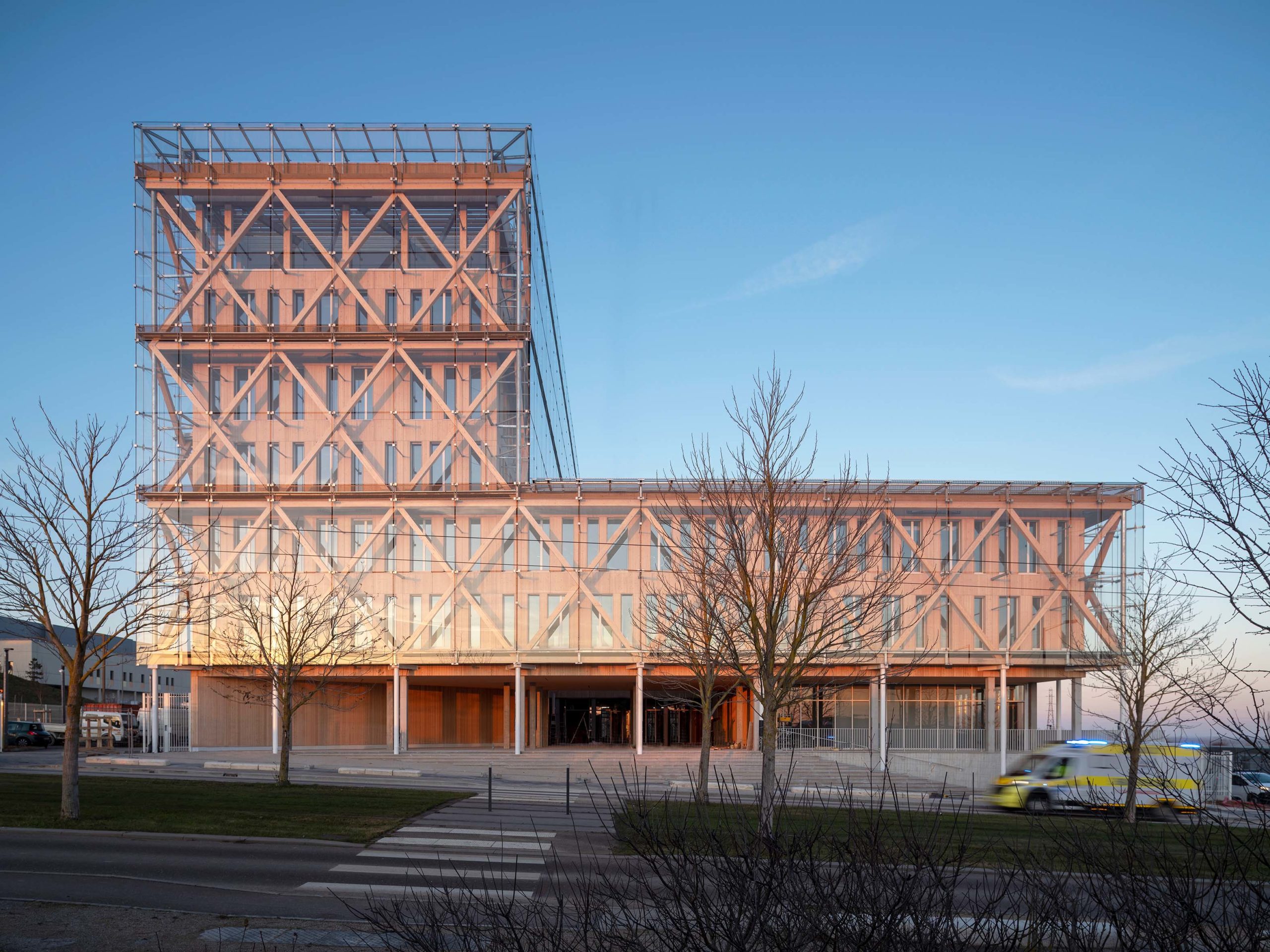
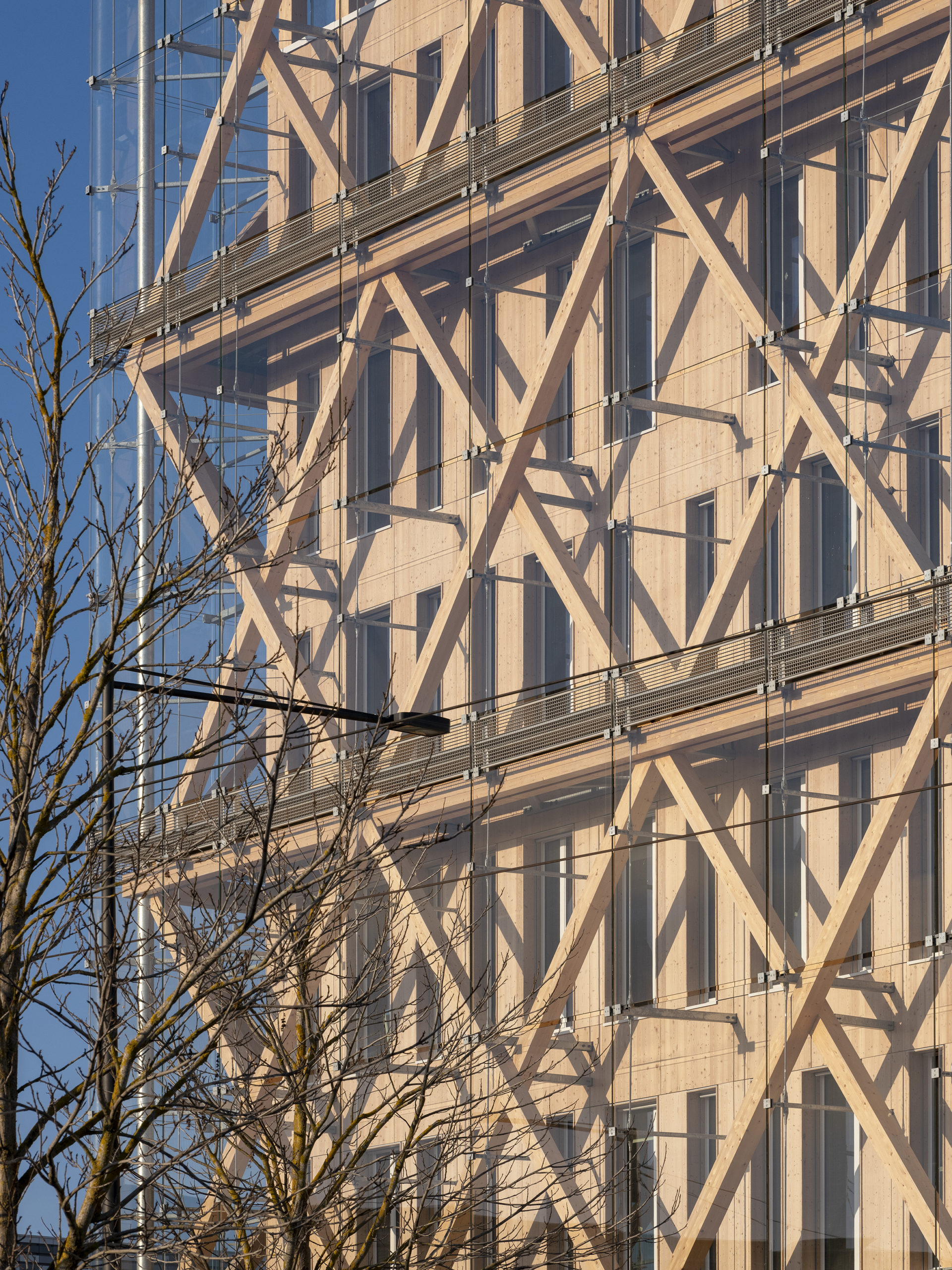 Banking group Caisse d’Epargne has a new head office designed by GRAAM. An intelligent seven-story modular building, the headquarters is designed with a prefabricated concrete floor and exo-wooden structure covered with a glazed double skin. The goal was to design a building that reached Passivhaus standards while providing a flexible work environment. Local materials were expertly implemented to create the stunning structure whose timber frame and glazed façade assist in heating and cooling, while the cleverly placed timber columns are ideal for partitioning work areas.
Banking group Caisse d’Epargne has a new head office designed by GRAAM. An intelligent seven-story modular building, the headquarters is designed with a prefabricated concrete floor and exo-wooden structure covered with a glazed double skin. The goal was to design a building that reached Passivhaus standards while providing a flexible work environment. Local materials were expertly implemented to create the stunning structure whose timber frame and glazed façade assist in heating and cooling, while the cleverly placed timber columns are ideal for partitioning work areas.
Casa Malandra
By TAC, Puerto Escondido, Mexico
Popular Winner, 10th Annual A+Awards, Private House (XS <1000 sq ft)
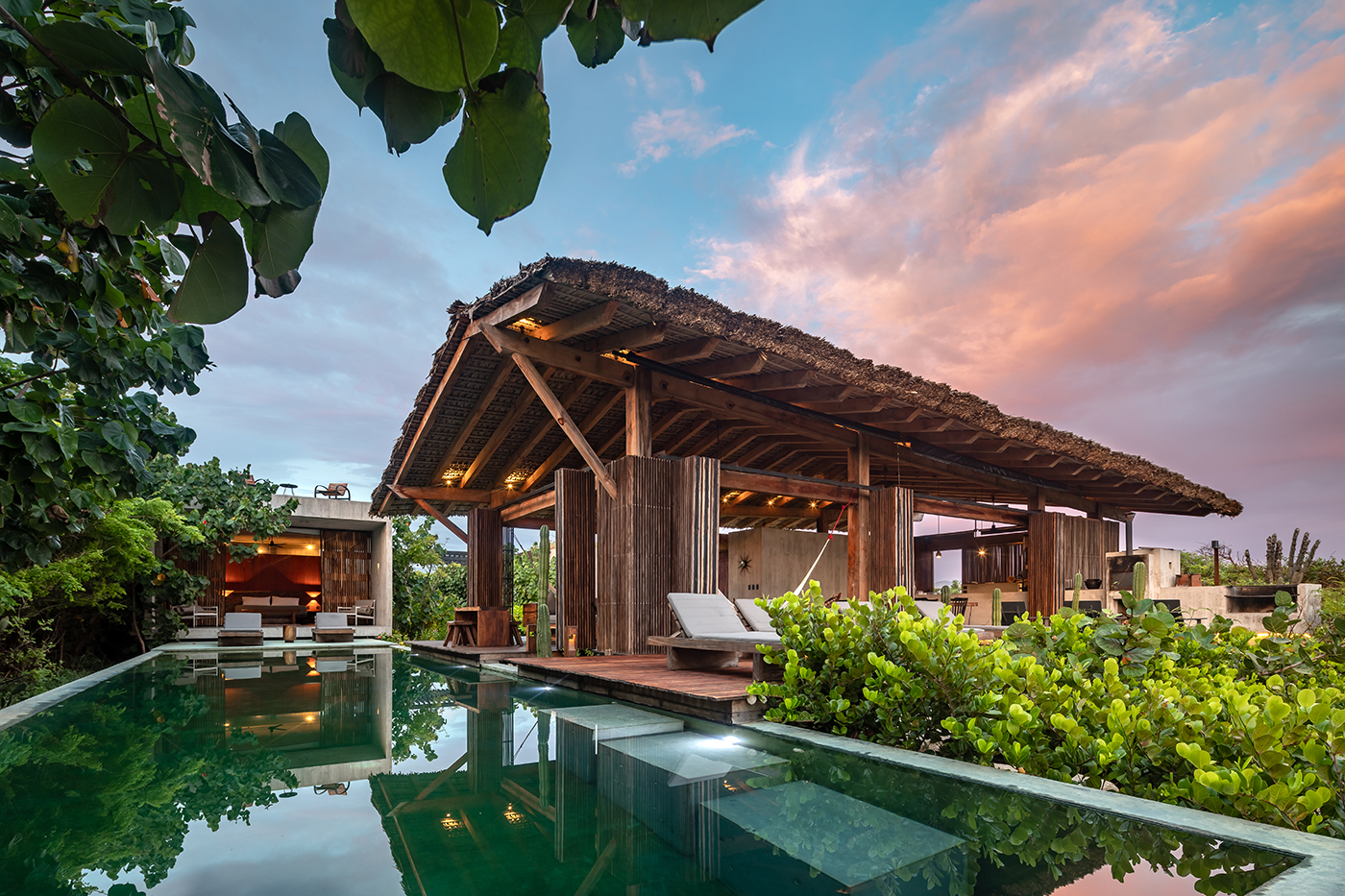
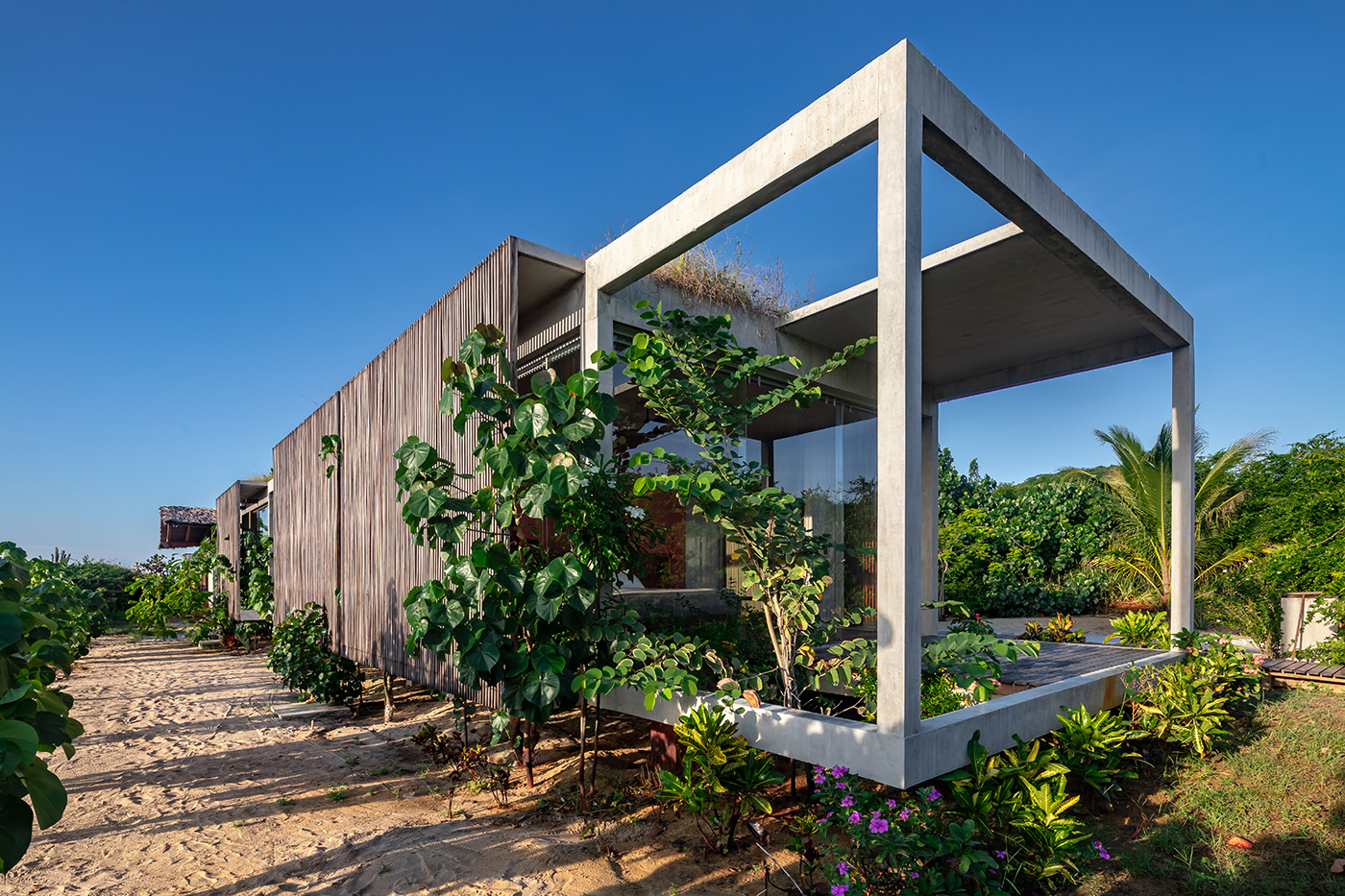
Photographs by Onnis Luque
Casa Malandra was conceived by the Mexican firm Taller Alberto Calleja amid the lush fields of Puerto Escondido in Mexico. The design creates many juxtapositions. While the concrete frame that forms the private domain of the dwelling emerges as a contemporary cuboid structure, it contrasts to the open wooden build that borders (next to the private pool), which draws inspiration from the Mexican Palapa — a traditional shelter roofed by palm leaves or branches whose timber frame is in keeping with the uncultivated surroundings. The exposed structure in both instances aim to increase the volume of space throughout while simultaneously connecting the various vernacular voids and implementing visual appeal.
IKEA – the good neighbour
By querkraft architekten zt gmbh, Vienna, Austria
Jury Winner, 10th Annual A+Awards, Retail
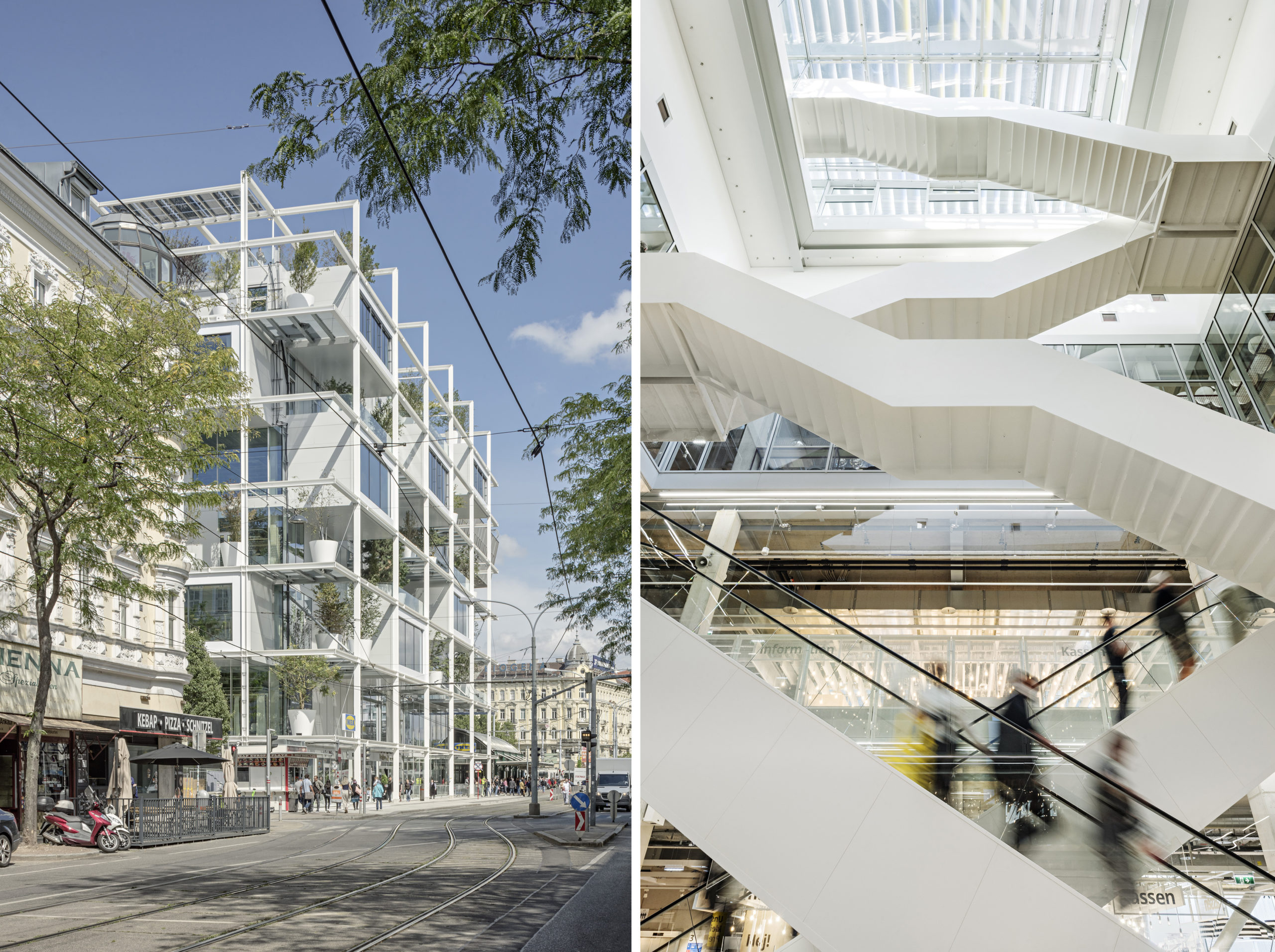
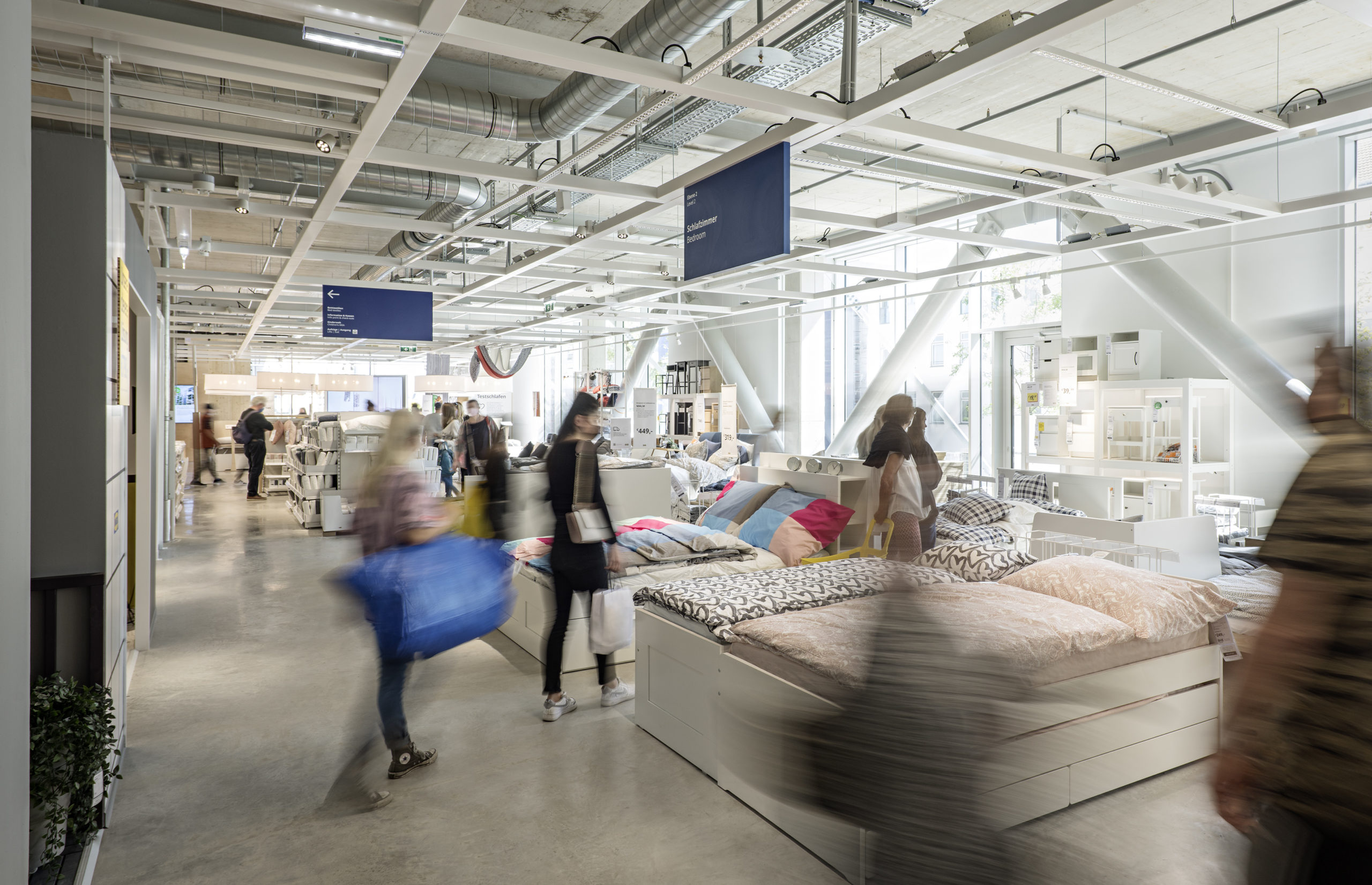
Photographs by Christina Häusler – Querkraft Architekten
In Austria’s capital, Vienna, Querkraft Architekten constructed the first IKEA store unsuitable for cars and parking. Designed to be “a good neighbor,” the community conscious building is the essence of its origin. The exposed framework of the no-frills building showcases how the structure is assembled, much like the renowned furniture pieces within. By exposing the infrastructure, the perceptible height of the spaces is increased dramatically, and the continuous void in the interior of the building allows visual contact between the different floors.
Additionally, the prefabricated reinforced concrete columns are set on a grid of around ten by ten meters, which guarantees considerable flexibility in the design and use of the spaces within. To ensure the efficient conditioning of the building, all of the services are based on a simple principle: short distances and direct access, which is helped by the lack of internal cladding. Like the beloved Kallax for apartments worldwide, Querkraft Architekten’s The Good Neighbor could well be a city center staple of the future.
Ghost Hangar
By John Grable Architects, TX, United States
Popular Winner, 10th Annual A+Awards, Showroom
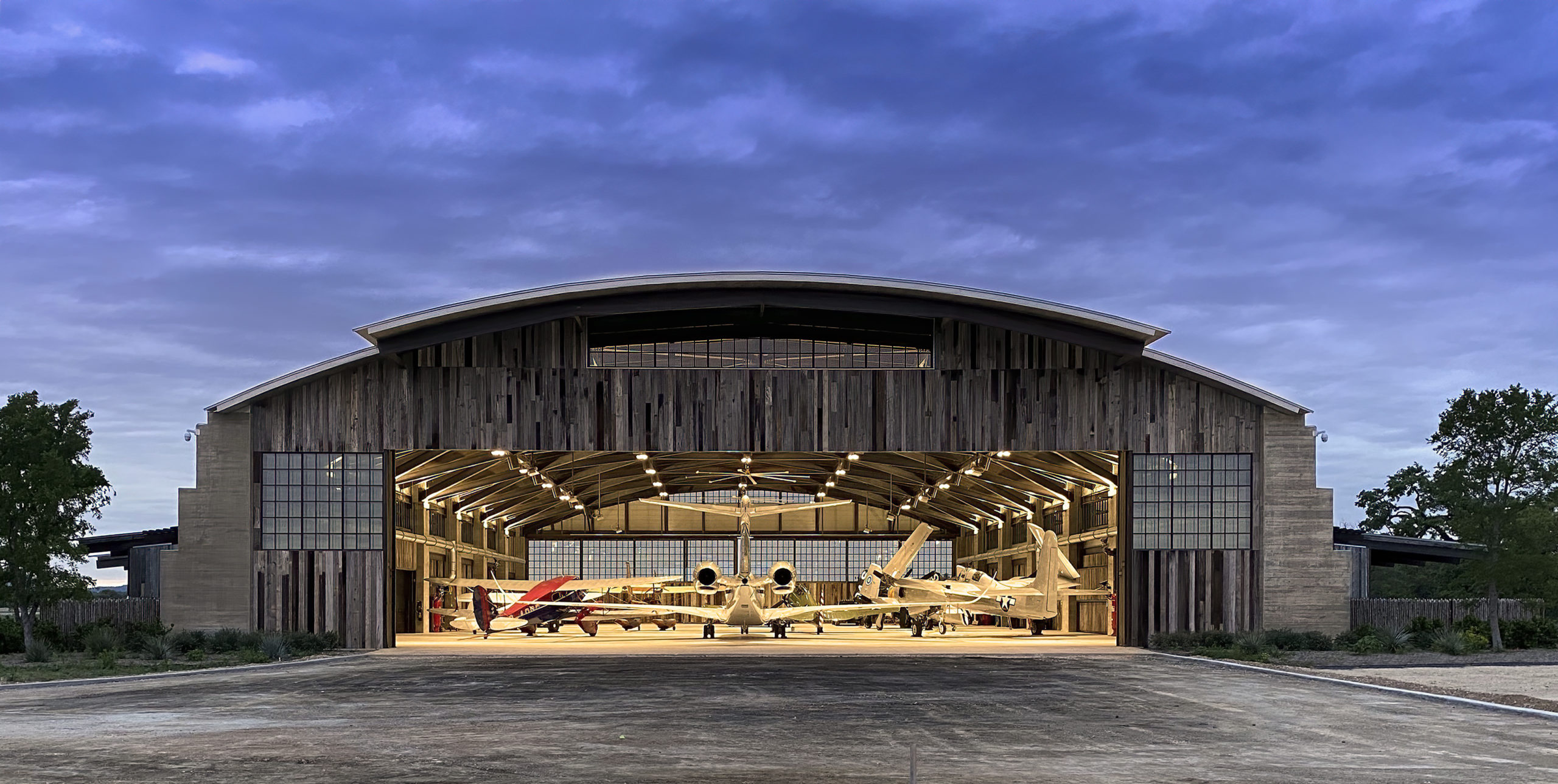
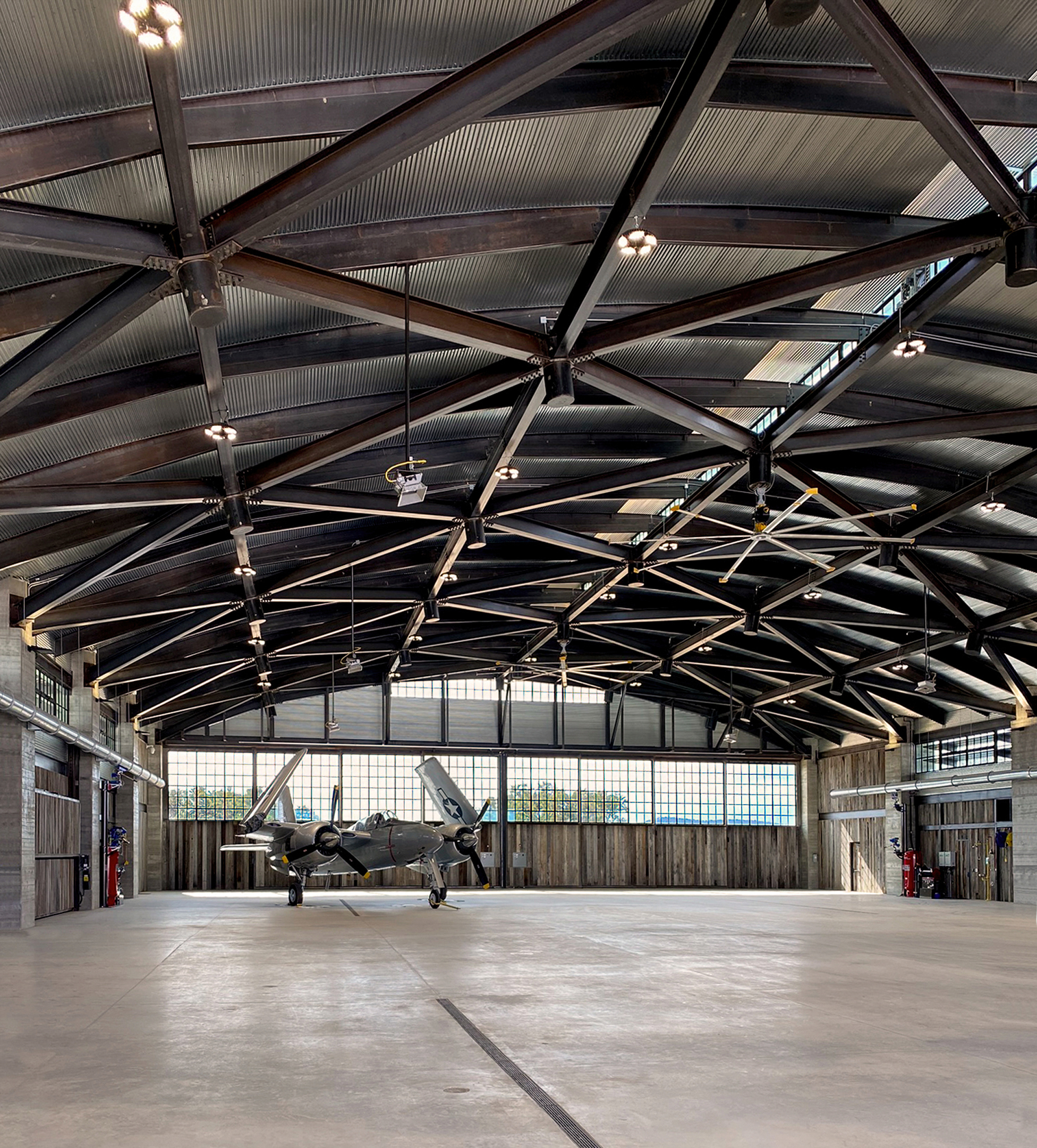
Photographs by John Grable Architects
Ghost Hangar was designed exclusively to house a living collection of Vintage WWII-era aircraft. The 32,000-square-foot structure sits on a remote site in Texas Hill Country, Texas. With their traditionally inspired design proposal, John Grable Architects aspired to ensure a minimal visual impact on the surrounding landscape. Drawing inspiration from the historical shape and form of the Quonset hut developed during WWII, a rigid frame was selected using a triangulated wide-flange barrel-vault structural system connected through a series of knuckles. This composition enables the building to achieve longer spans suited to aircraft housing. The unconventional steel roof structure and board-formed concrete buttresses provide unquestioned durability. At the same time, reclaimed barn wood siding was specified pre-weathered to tolerate the surrounding climate while blending harmoniously with the territory.
The passive light shelves, deep roof overhangs and cupola openings work in conjunction with the Thermasteel envelope to render the hangar volume a shaded refuge throughout the warm summers. The building is not only aesthetically era-appropriate but it also achieves sustainable properties through the use of age-old principles.
Cycling and Pedestrian Bridge in Bohinj Slovenia
By Atelje Ostan Pavlin, Municipality of Bohinj, Radovljica, Slovenia
Jury Winner, 10th Annual A+Awards, Transportation Infrastructure
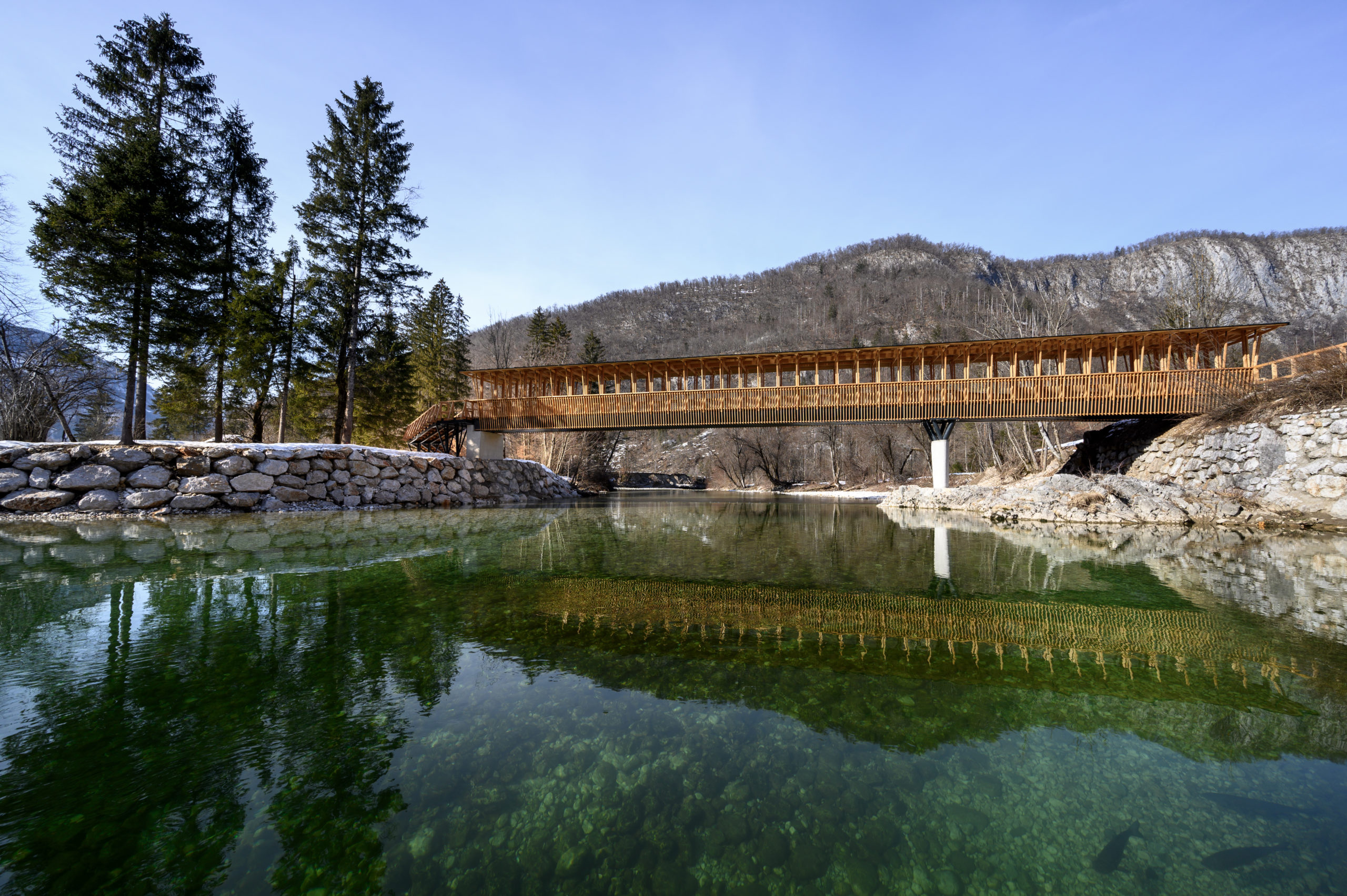
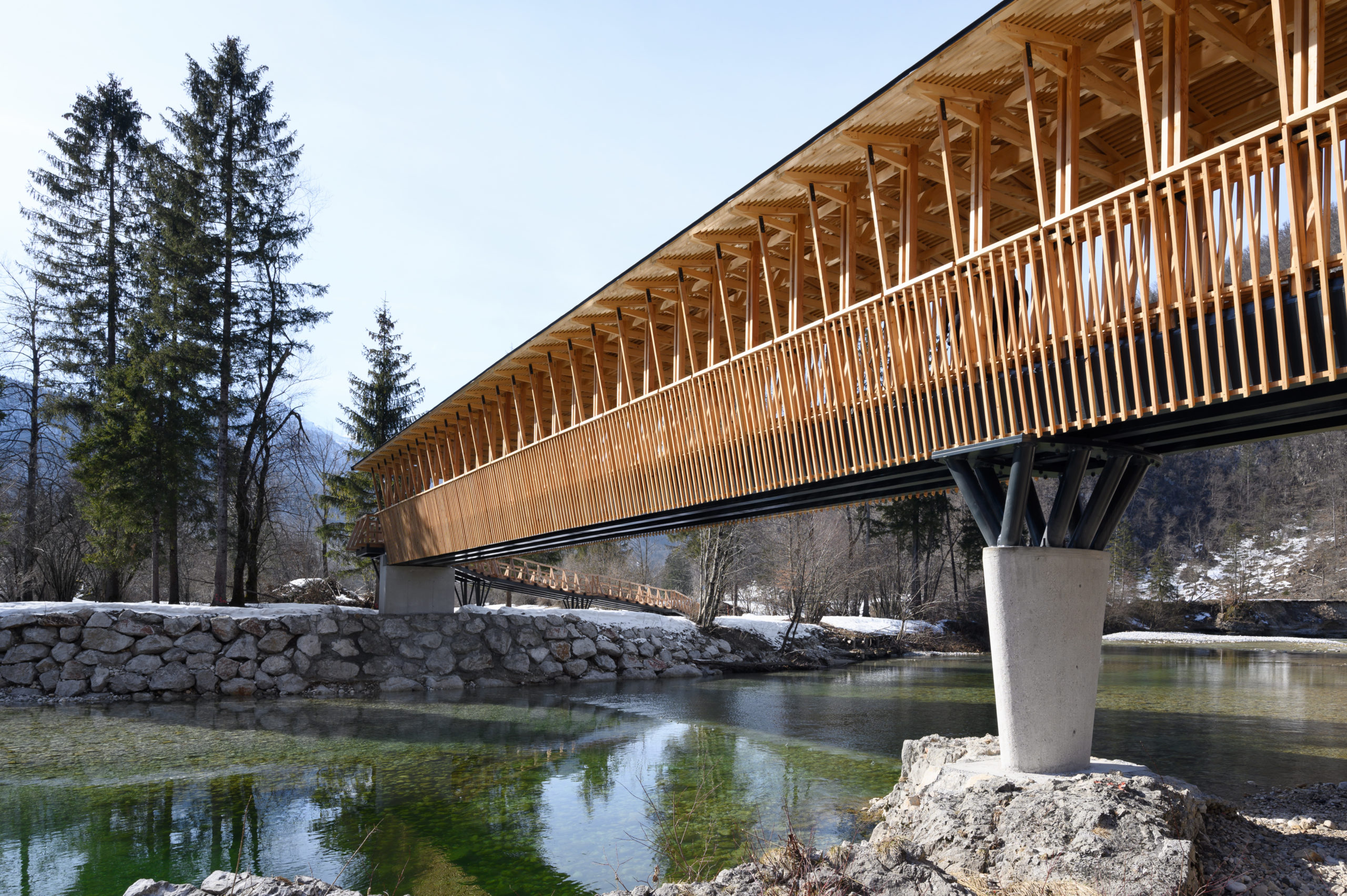
Photographs by Mirian Kambič
The intricate footbridge on the Bohinj Cycle Route connects the upper and lower banks of the Sava Bohinjka River. The central volume of the bridge is supported at three points, and the load-bearing structure consists of four steel beams running the length of the bridge. The intermediate ellipsoid concrete pillar rests on the river bed and carries steel “branches” to support the beams. The architects aimed to evoke the sense of a “rural wooden temple” with their bridge reflecting the form of a traditional hayrack. The main construction, pillar rhythms, wooden details, ties, eaves and roof are all built from local larch wood to ensure harmonious integration with the natural landscape.
Nantong Urban Agricultural Park Exhibition Center
By Z-ONE Tech, Nantong, China
Jury Winner, 10th Annual A+Awards, Gallery & Exhibition Spaces
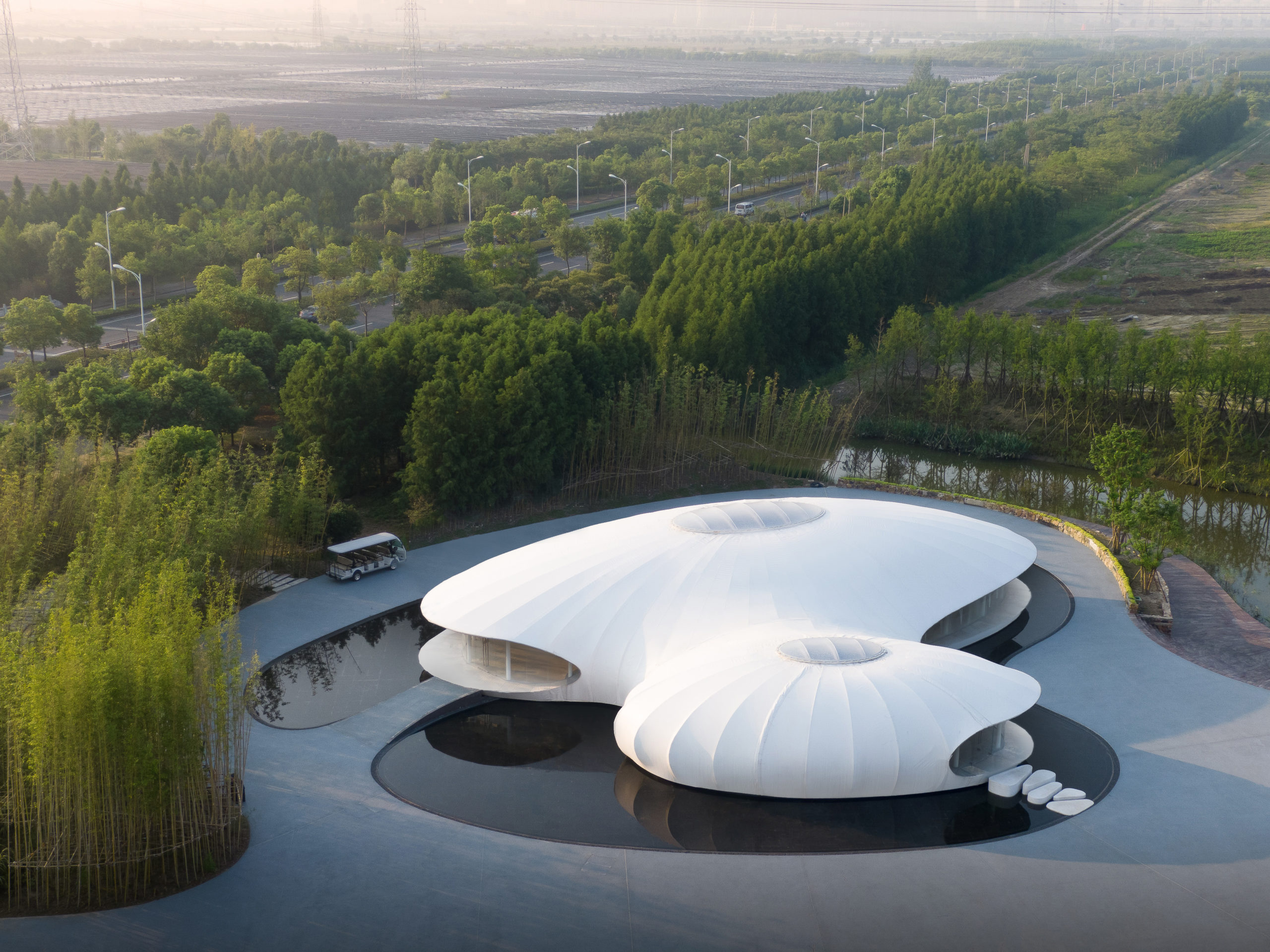
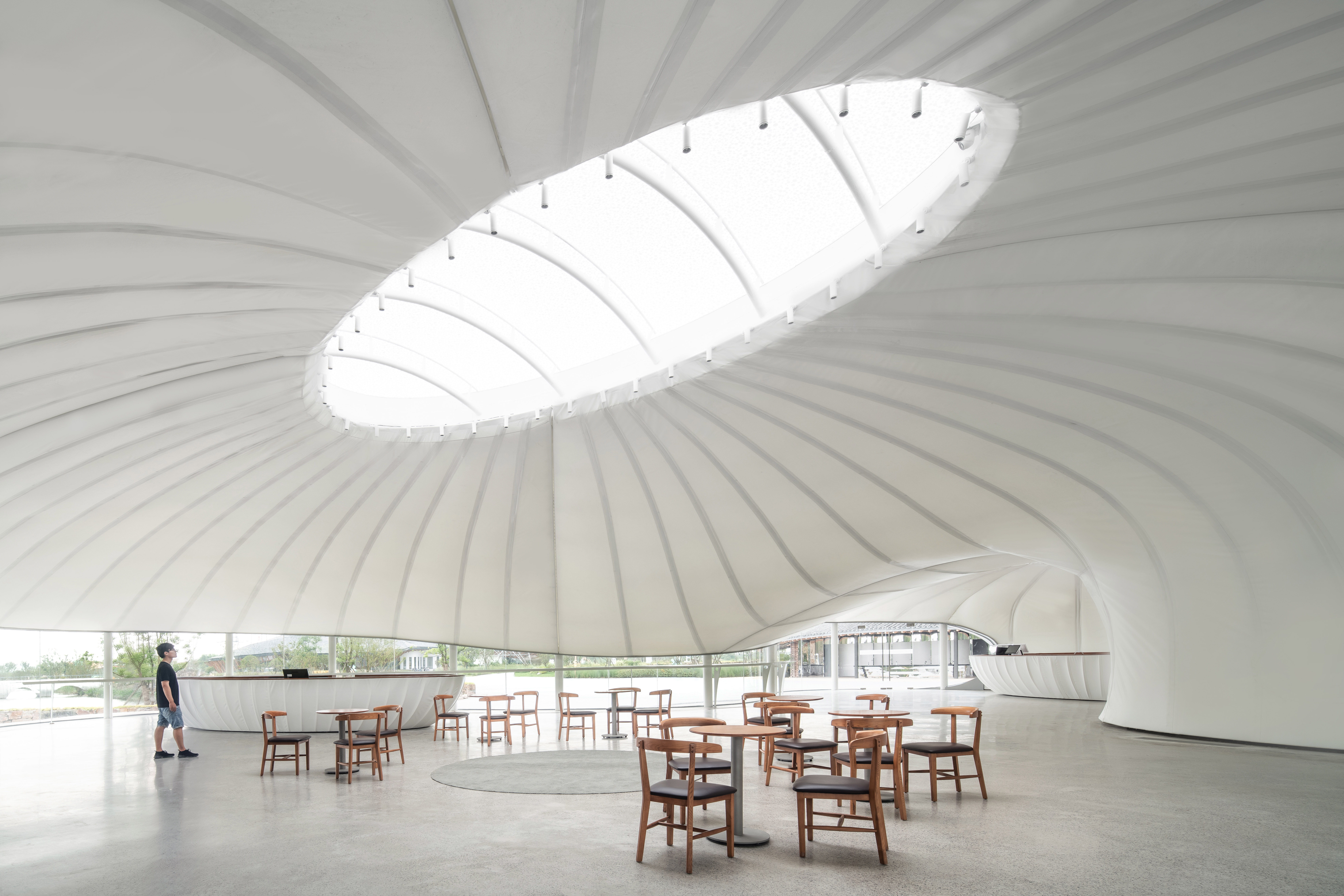
Photographs by LINBIAN
Experimental architectural practice Z-ONE Tech has designed several distinct buildings for Nontong Urban Agricultural Park. The Rural Living Room Exhibition Centre is a contemporary building in form and construction. The white tent-like structure has a membrane segmented by the structural lines that shape its two ovoid figures with their sky-lights while vertical columns hold the perimeter glazing that captures the raw vistas beyond.
Architizer is thrilled to announce that the 11th Annual A+Awards is open for entries! With an Early Entry Deadline of November 4th, 2022, the clock is ticking — get started on your submission today.

